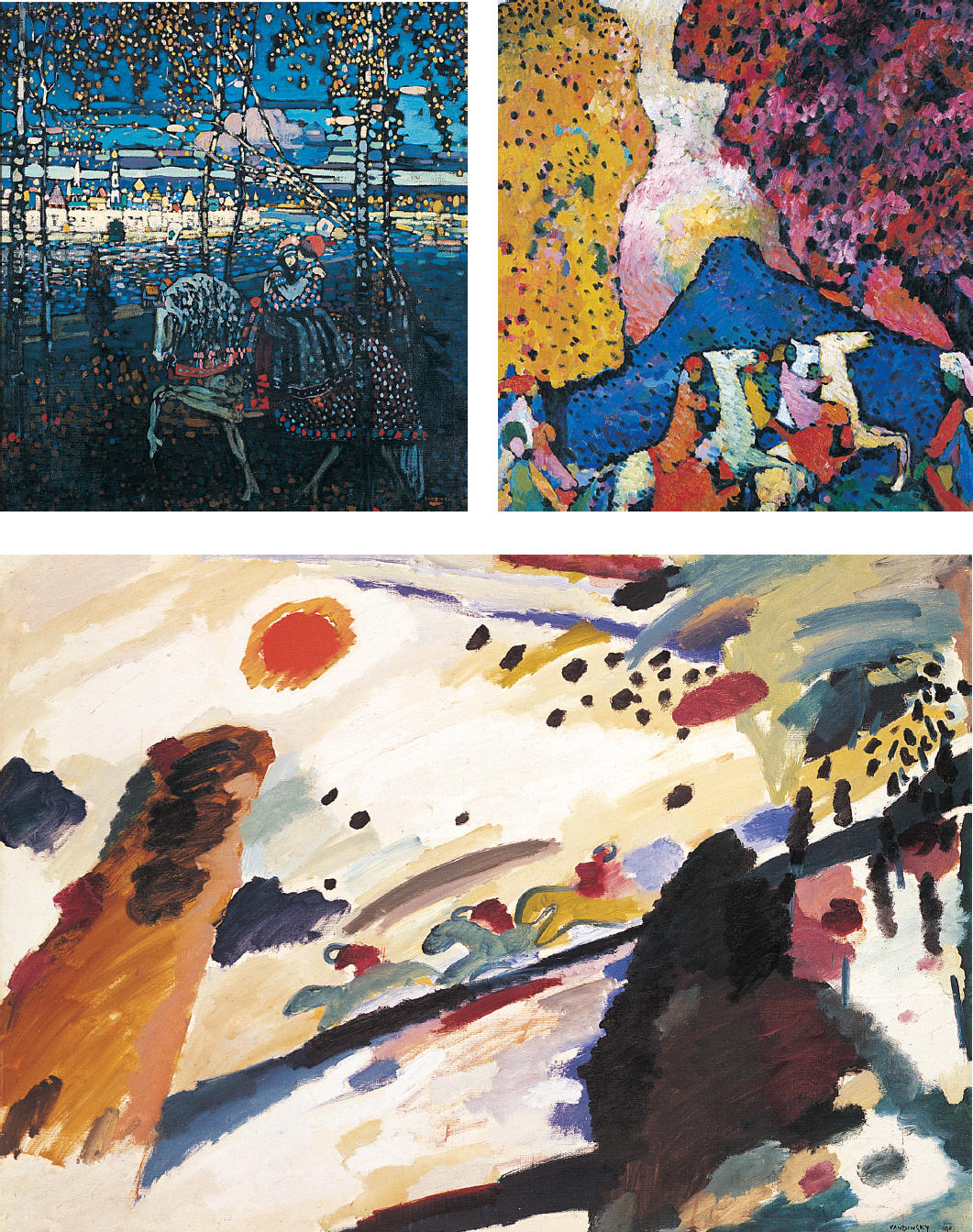Expressionists and Fauves
In Paris and Vienna — artistic centers that were also centers of avant-garde music — two émigré artists pursued separate but parallel paths toward completely abstract painting.
Our horse-and-rider pictures by the Russian-born painter Vasily Kandinsky (1866–1944) show how the process was accomplished. Kandinsky belonged to a German movement in the arts called expressionism — not to be confused with impressionism — which sought to express the most extreme human feelings by divorcing art from everyday literalness. Anguish, even hysteria, could be conveyed by the harsh clashing of strong colors, irregular shapes, and jagged lines. What seems to be depicted is not something external but the artist’s inner turbulence — most violently in the last Kandinsky picture, Romantic Landscape, which is almost entirely abstracted from the outer world.
Parallel to the expressionists was a short-lived group in Paris dubbed Les fauves, “the wild beasts.” The fauves experimented with distorted images bordering on the grotesque; they also employed motifs from what they called “primitive” art as though in defiance of a decadent European culture. In Pablo Picasso’s famous painting Les Demoiselles d’Avignon of 1907 (Avignon was a street in the red-light district of Barcelona), the quality of abstraction is evident in the angular bodies and the African-mask-like heads — a complete break with conventional European rules of human portrayal (see page 309). Picasso took a further step toward abstraction later when he turned to cubism.
There is violence in both Kandinsky’s and Picasso’s work of this period. Certainly that is how it struck a generation used to the nonthreatening art of the impressionists — painters of flickering summer landscapes, soft-edged nudes, and diaphanous action pictures of the ballet. Composers, too, courted violence in their music. The Hungarian composer Béla Bartók wrote a “barbarous” piano piece entitled Allegro barbaro. Stravinsky, in his ballet The Rite of Spring, depicted human sacrifice in the fertility ceremonies of primitive Slavic tribes.

Horses and riders, painted by Vasily Kandinsky over a four-year period, show his path toward nonrepresentational painting. In the first picture, the figures are quite clear; in the last, they could be missed entirely. All images © Artists Rights Society (ARS), New York/ADAGP, Paris.
Top left: Couple on Horseback, 1907. Artothek. Top right: Blue Mountain (Der blaue Berg), 1908–09. Solomon R. Guggenheim Museum, New York. Solomon R. Guggenheim Founding Collection. By gift 41.505. Bottom: Romantic Landscape, 1911. Artothek.
